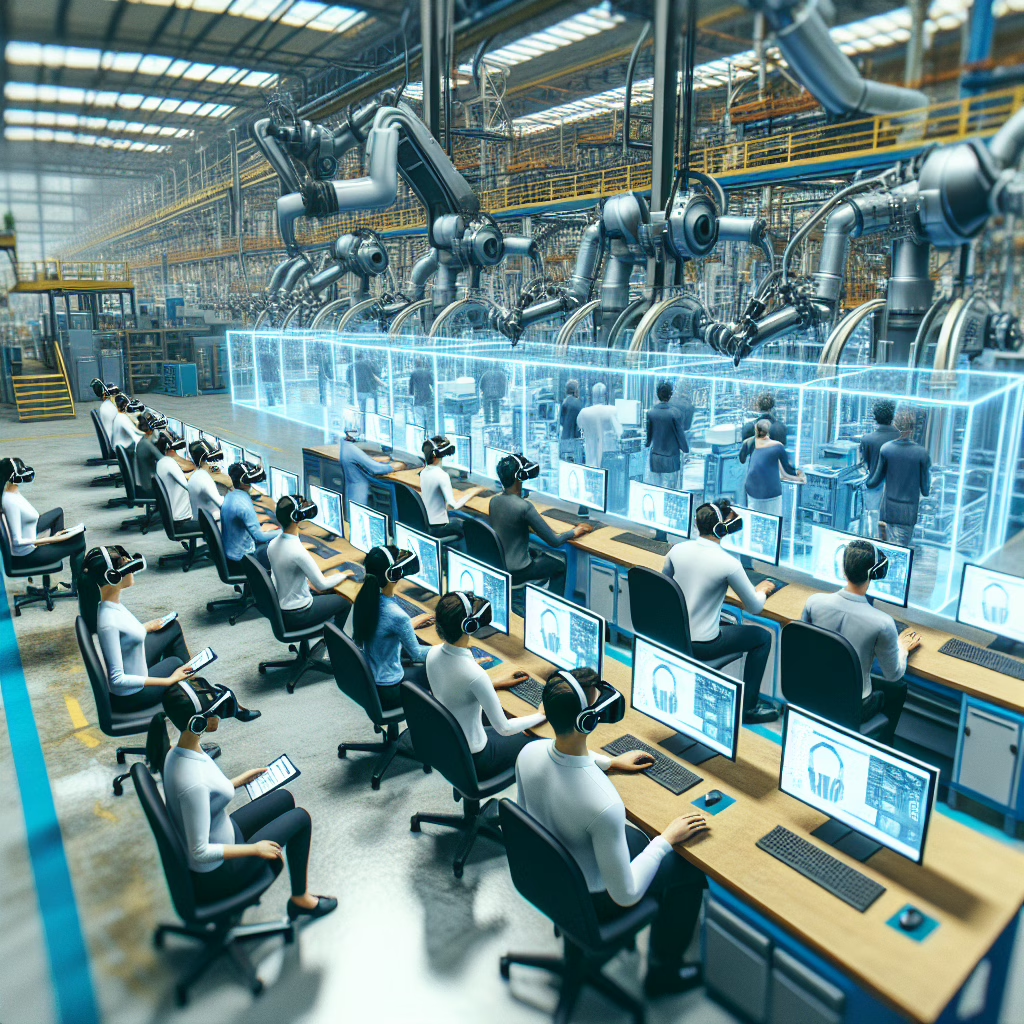The metaverse is not just a buzzword anymore; it’s a reality, and it’s shaking up the industrial world in ways we could only dream of before. Think of it as a virtual playground for serious adults—where factories are as vibrant as theme parks and productivity tools look like they belong in a sci-fi blockbuster. In this article, we’ll dive into how the metaverse is transforming industries, melding the physical and digital realms while keeping our safety helmets firmly on.
Industrial Transformation: The Metaverse Revolution
Industries are no longer confined to their physical boundaries. With the advent of the metaverse, companies can create virtual replicas of their operations—known as digital twins. Imagine walking through a factory floor without leaving your couch! These digital twins allow businesses to simulate processes, identify inefficiencies, and streamline operations with the grace of a synchronized swimmer.
This shift not only boosts productivity but also reduces costs. You might think this sounds like magic, but it’s all thanks to advanced technologies such as IoT, AI, and VR. By integrating these elements into the metaverse, industries can enhance training programs and operational strategies. Suddenly, training new employees no longer requires them to fumble around machinery; instead, they can master skills in a safe, controlled environment.
Virtual Reality: The New Training Ground
Incorporating virtual reality (VR) into industrial training is like adding sprinkles to an already delicious cupcake. Employees don headsets and enter immersive simulations where they can practice complex tasks without the risk of real-world consequences. Forget about boring manuals or endless PowerPoint presentations; VR provides engaging experiences that stick in your memory like that catchy tune you can’t get out of your head.
Moreover, VR training allows for immediate feedback. Trainees can learn from their mistakes without any costly repercussions for the company. Companies using VR for training report improved retention rates and enhanced performance—proof that learning doesn’t have to be dull!
The Collaborative Power of the Metaverse
The metaverse also fosters collaboration across different sectors. Picture a virtual conference room where engineers from different continents can brainstorm solutions while sipping coffee from their respective kitchens. This kind of interaction breaks down geographical barriers and brings diverse perspectives together in real-time, similar to how diverse industries collaborate in the physical world.
Using augmented reality (AR) alongside VR opens doors to even more collaborative possibilities. Engineers can overlay digital information onto physical machinery during maintenance tasks, resulting in fewer errors and faster repairs. It’s like having a helpful ghost whispering instructions into your ear—minus the spooky vibes! The merger of AR with industrial practices allows teams to maximize efficiency by leveraging real-time data overlays.
Sustainability Meets Innovation
As industries embrace the metaverse, sustainability becomes a central focus. Companies can use digital simulations to assess their environmental impact before making costly changes in the real world. Imagine being able to test out new eco-friendly processes without actually running them on-site! It’s like trying on clothes before buying them—only this time, it’s about saving the planet.
By optimizing resource usage and reducing waste through simulations, businesses can significantly lower their carbon footprints. The metaverse provides an ideal platform for testing new ideas that contribute to a greener future while still ensuring profitability. This commitment to sustainability aligns with the growing consumer expectation of responsible practices in every industrial operation.
The Future is Bright (and Digital)
The future of industries in the metaverse is not just a pipe dream—it’s happening now! Companies worldwide are already investing in metaverse technologies to stay competitive. From automotive giants designing cars in virtual environments to manufacturing plants optimizing workflows through digital twins, innovation is at our fingertips.
The beauty of the metaverse lies in its adaptability; it evolves continuously as technology advances. As we move forward into 2025 and beyond, we can expect even more revolutionary changes that will redefine what it means to work in an industrial setting. Companies that do not adapt may find themselves left behind.
So next time someone mentions the metaverse, don’t roll your eyes! Instead, consider all the incredible possibilities it brings to industries everywhere. With each advancement comes new opportunities for growth, collaboration, and sustainability—and who wouldn’t want that?
What are your thoughts on how the metaverse will shape our industrial future? Share your ideas below! Explore more on industrial advancements and transformations as they unfold.
For additional insights, check out related articles on our blog:
- Been hiding from Windows 11 24H2?
- Rejoice! Carmakers are Embracing Physical Buttons Again
- Majestic DJIs and their immersive features
- Formula 1 Drivers Just Hit the Track in These Full-Sized Lego Cars
- 10 Lego Cars Just Raced the F1 Miami Grand Prix
For more updates on technology trends, visit Geeky Opinions.
Learn more about the metaverse from credible resources like Wired.

